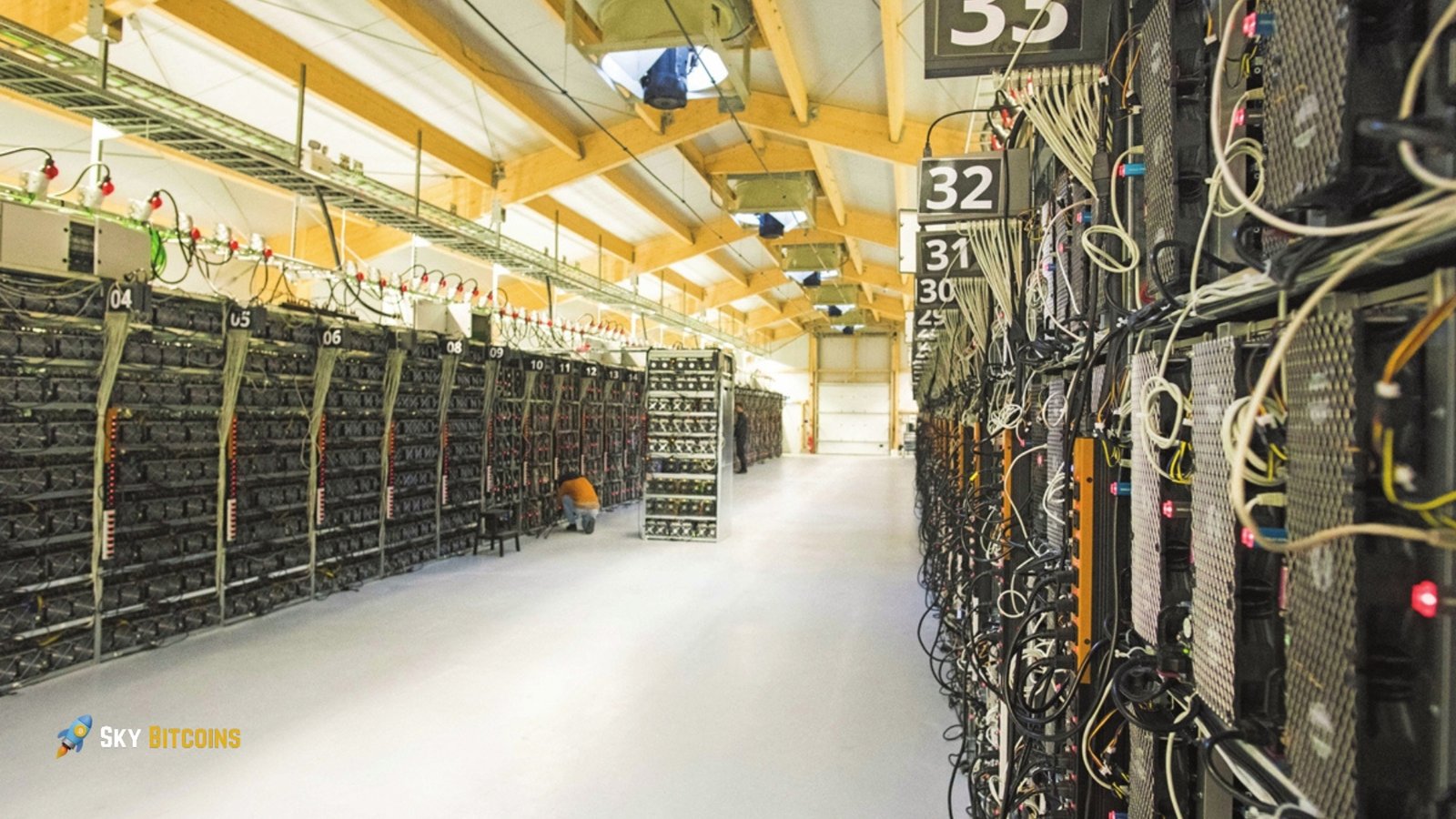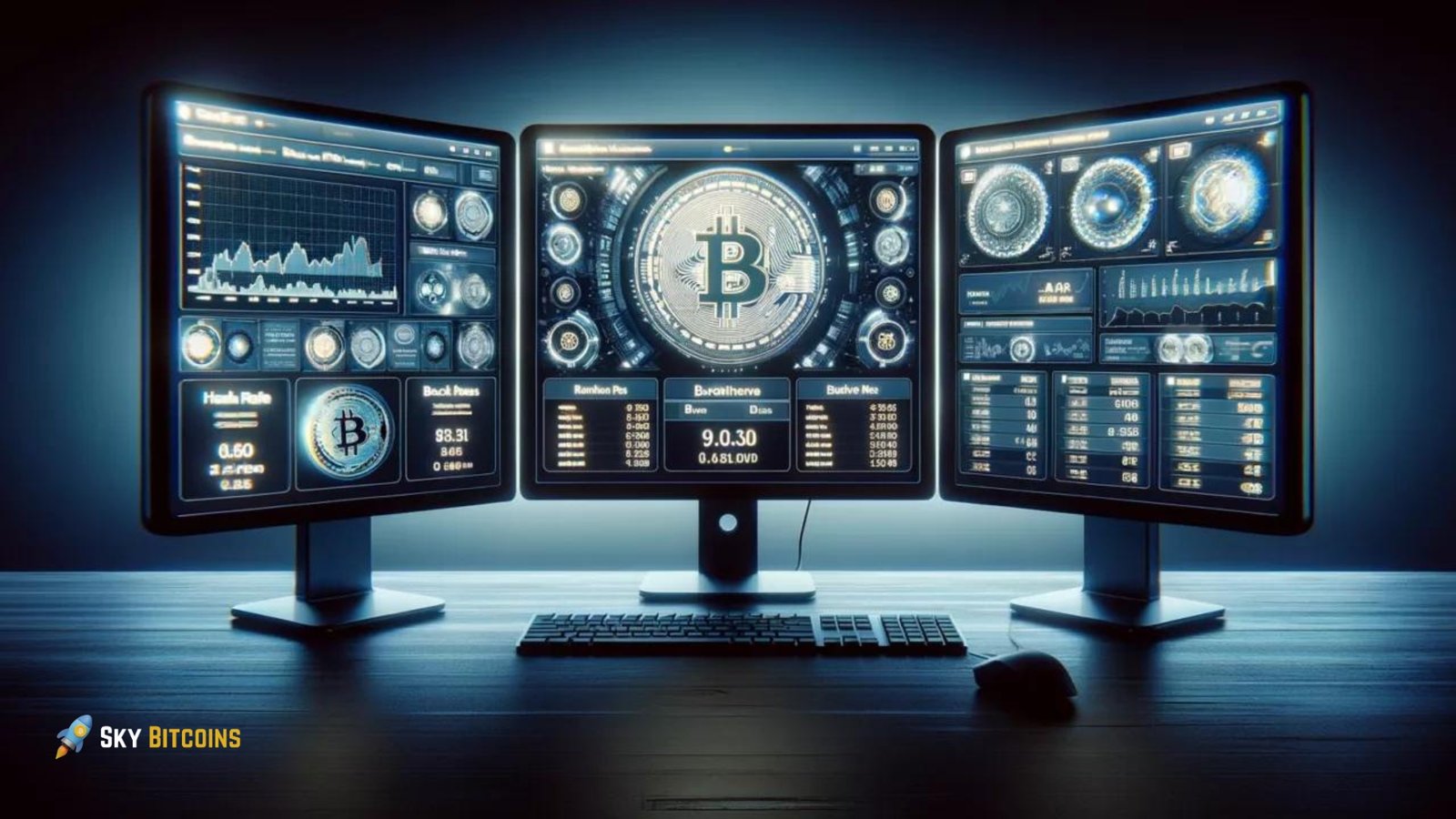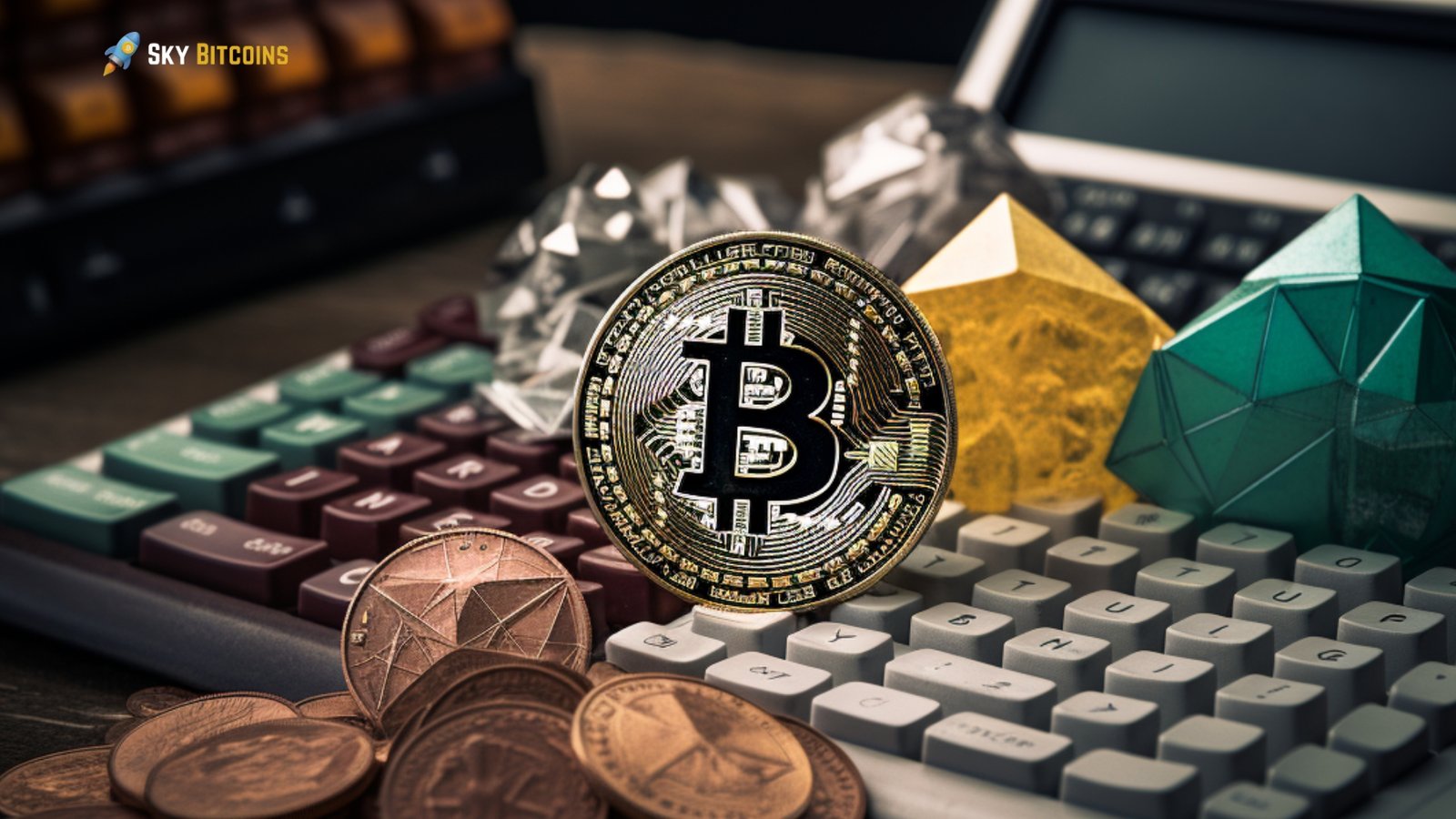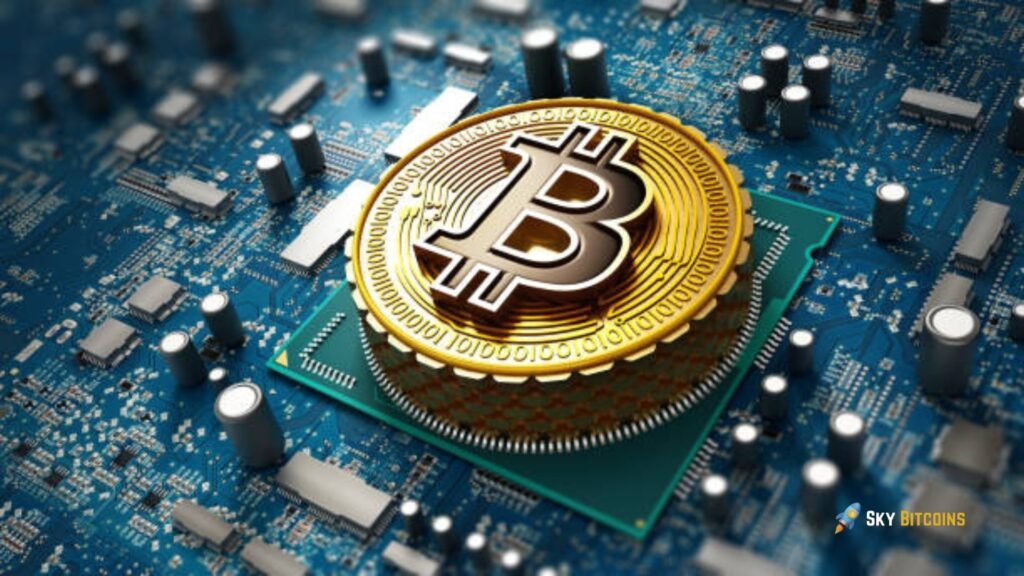From a decentralized pastime for individuals to a cutthroat industry controlled by specialized gear and massive enterprises, Bitcoin mining has come a long way since its infancy. Rising energy demands, technological specialization, and regulatory attention have made Bitcoin mining more complex as of 2025. This article will walk you through the process of Bitcoin Mining Setup and cover topics such as required software and hardware, environmental factors, and profitability measurements.
Understanding Bitcoin Mining
“Mining” refers to validating transactions on the Bitcoin blockchain by solving complicated cryptographic puzzles. It is a game of hashing that miners compete to discover the one that best fits Bitcoin’s cryptographic requirements. The first miner earns the block reward, which is 6.25 BTC for every block (as of 2025), plus transaction fees from the validated block, to solve the problem. About every four years, this award is divided in half; the next scheduled halving is in 2024–2025. Maintaining a competitive mining operation consumes massive amounts of energy and computer power, but it safeguards the network and guarantees decentralization. GaAccesso block rewards are directly proportional to one’s hash rate, a measure of computational capability.
Step-by-Step Bitcoin Mining Setup
Choose Your Mining Method
There are three primary ways to mine Bitcoin in 2025:
- Personal Mining: Involves running your hardware setup. This option requires significant upfront investment in hardware and electricity.
- Mining Pool: Individual miners pool their resources with others to increase the chance of earning rewards. Payouts are distributed proportionally based on contributed hash power.
- Cloud Mining: Renting mining power from a third-party provider. You don’t need to buy or maintain equipment, but this method can involve risks, including fraud or limited control over the mining process.
Acquire the Right Mining Hardware
Your gear is the single most important factor in determining your mining efficiency. As of 2025, the industry standard for Bitcoin mining gear is Application-Specific Integrated Circuits (ASICs). With their optimized design for Bitcoin mining, ASICs offer superior hash rates and energy efficiency compared to general-purpose CPUs or GPUs.

Popular ASIC Models in 2025:
- Antminer S19 XP: 140 TH/s (terahashes per second), a power consumption of around 3010W.
- What’sMiner M50S: 126 TH/s, with a power efficiency of 29.5 J/TH.
- AvalonMiner 1366: 130 TH/s with around 3250W power consumption.
Think about features like power consumption (W), energy efficiency (J/TH), and hash rate (TH/s) when choosing an ASIC. Energy is typically the most expensive part of mining, so getting the most out of your hash rate while using the least power is essential.
Factors to consider when choosing mining hardware:
- Cost: Depending on the model, top-tier ASICs cost anywhere from $3,000 to $10,000 d.
- Availability: Given the global demand for ASICs, procurement might be delayed. Research vendors carefully to avoid scams.
- Cooling needs: ASICs generate significant heat, so investing in proper cooling solutions is essential to avoid hardware damage or failure.
Set Up a Suitable Mining Environment
To successfully run your mining setup, you’ll need a conducive environment that ensures hardware longevity and efficiency. The following factors are crucial:
- Electricity: Getting a cheap and dependable power source is crucial for mining operations because hydroelectric power is required in places like Quebec or Iceland. This is one example of miners reducing electricity costs while meeting their energy needs.
- Cooling and Ventilation: Not surprisingly, ASICs produce a lot of heat. Overheating can reduce performance or destroy mining gear if proper ventilation and cooling are not in place. Optimal temperature control can be achieved with the help of liquid cooling systems or industrial fans… Noise Reduction: DeICs can generate noise levels ranging from 70 to 90 dB. Depending on the model. This can cause some disturbance if you’re doing home mining. If noise is an issue, you might want to think about soundproofing your home or finding a more secluded spot.
- Physical Security: Make sure nobody can steal from or mess with your mining operation. Thieves would gladly target mining machines, therefore it’s wise to take precautions like installing alarms, lockable enclosures, or surveillance systems.
Install Mining Software
The software you use, Bitcoins, connects your computer to the Bitcoin network. This program manages the mining process by connecting your mining rig to the blockchain and mining pool.

Popular Mining Software:
- CGMiner: One of the most well-established and widely-used open-source Bitcoin mining software tools.
- BFGMiner: Like CGMiner, it allows for easy overclocking and hardware monitoring and is better suited for advanced users.
- NiceHash: While not specifically for Bitcoin, NiceHash offers mining solutions for various cryptocurrencies. It allows users to mine the most profitable coins and convert their earnings into Bitcoin.
Join a Mining Pool (Optional)
Due to the very competitive Bitcoin network, your odds of obtaining a block reward as a solo miner can be relatively low. You can join a mining pool if you want to pool your computing power with other miners; your odds of solving a block will increase, but you’ll have to split the spoils with everyone else.
Popular Mining Pools:
- F2Pool: One of the oldest and largest mining pools, supporting Bitcoin and other cryptocurrencies.
- Slush Pool: Known for its transparency and user-friendly interface, Slush Pool provides real-time data on your mining performance.
- Antpool: Managed by Bitmain, Antpool is another popular choice for Bitcoin miners. It offers robust services and a large user base.
Monitor and Optimize
Once your mining setup is operational, continuous monitoring is crucial. Mining is a long-term endeavor, and optimizing for profitability is a constant process.
- Monitor Temperature and Performance: The mining rigs’ temperatures must be closely monitored. The mining software’s built-in monitoring features can help you get a feel for your hash rate, uptime, and energy usage. You can also use an external app like Awesome Miner.
- Optimize Energy Efficiency: To cut energy expenses, switch to more efficient gear or move to a cheaper electricity location. Routine maintenance, which includes cleaning the ASICs and maintaining enough airflow, can further enhance efficiency.
Profitability Considerations
Get a feel for the hardware expenses, power pricing, and Bitcoin price patterns before you jump into mining to determine your prospective profits. Some online calculators, such as WhatToMine, take into account the following factors when calculating your profitability:
- Hash Rate: Higher hash rates increase the likelihood of winning block rewards.
- Electricity Costs: Given the power-hungry nature of ASICs, the cost of electricity can make or break your mining profitability. Aim to keep energy costs below $0.10 per kWh.
- Bitcoin Price: Market volatility affects the value of mined Bitcoin. Lower prices might render mining unprofitable unless you have access to ultra-low-cost electricity.
- Mining Difficulty: As more miners join the network, Bitcoin’s mining difficulty increases, requiring more computational power to solve blocks.
Since the price of Bitcoin, mining difficulty, and electricity all change over time, it is crucial to reevaluate your estimates frequently.
Regulatory and Environmental Concerns
Mining bitcoins uses a lot of energy and harms the environment. Several organizations’ governments are either considering or have passed legislation to regulate mining. For example, many Bitcoin miners fled to the United States or Kazakhstan for safer havens from China’s 2021 crackdown on the industry.

The mining industry is also increasingly concerned with sustainability. Many miners are switching to renewable energy sources such as solar, wind, or hydroelectricity to lessen their environmental impact and secure their financial future.
Conclusion
In 2025, you’ll need a lot of money, technical knowledge, and time to set up a profitable Bitcoin mining operation. There are many moving parts, such as picking the correct software and hardware, ensuring you’re using energy efficiently, and getting into a mining pool. The mining sector is very competitive and unpredictable, so weighing the potential rewards against the hazards is necessary. If you want to set up a Bitcoin mining setup that works and makes money, follow the instructions above.


